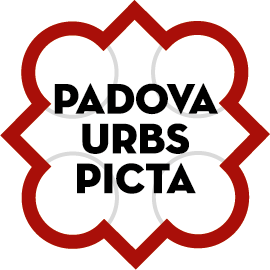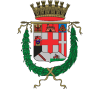The itinerary that connects Padua and the Euganean Hills to the Venetian Lagoon follows an ancient river route once traveled by cargo boats, the so-called “burci”, which sailed loaded with goods such as the trachyte of the Euganean Hills, the salt of Chioggia and the Pontelongo sugar.
From Padua you can reach Chioggia and the Venetian Lagoon with an unforgettable itinerary. For the first stretch, from Padua to Bovolenta, two alternative routes can be followed. The first one touches the Euganean Hills and deviates towards the sea from the center of Battaglia Terme; the second follows the course of the Roncajette canal. In Battaglia Terme, the sharp profiles of the Euganean Hills are left behind and they aim decisively towards the east, following the winding course of the Vigenzone canal. During the ride, some white stones numbered and stuck to the ground, masonry bridges, original stone curbstones and numerous Venetian villas attract attention. These are signs that indicate the existence of an ancient waterway important for river navigation.
The names of the towns also recall the civilization of the waters: Gorgo (small body of water) and Bovolenta (whirlpool of water). The next town, Pontelongo , whose name is self-explanatory, owes its development to the presence of a large sugar factory built in the 19th century and still active. The municipal seat is the beautiful Villa Foscarini Erizzo, recently restored.
Leaving the country of sugar, we meet that of the Benedictine courts: Correzzola. A metal walkway allows you to reach the sixteenth-century Benedictine Court built by the monks and the parish church dedicated to San Leonardo. On these lands the Benedictines have started an extensive struggle to counter the formation of the marshes and, having completed the reclamation work, have built characteristic rural houses with barn to spread agriculture. Of these today, sixty remain and many still retain the name of the saint to whom they are dedicated. Then take the towpath on the left bank, after a few kilometers near Castelcaro , a tourist sign indicates that where an oratory now stands, in the fourteenth century the Carraresi had built a military outpost to guard their “salt road”.
Chioggia, which is now a few kilometers away, in the Middle Ages had one of the most important salt pans in the Mediterranean in the lagoon. During the last stretch the landscape changes considerably, the expanses of fields furrowed by a dense network of ditches and canals gives way to the flat and shiny expanses of the lagoon from which the historic center of Chioggia emerges, the destination of our itinerary.












